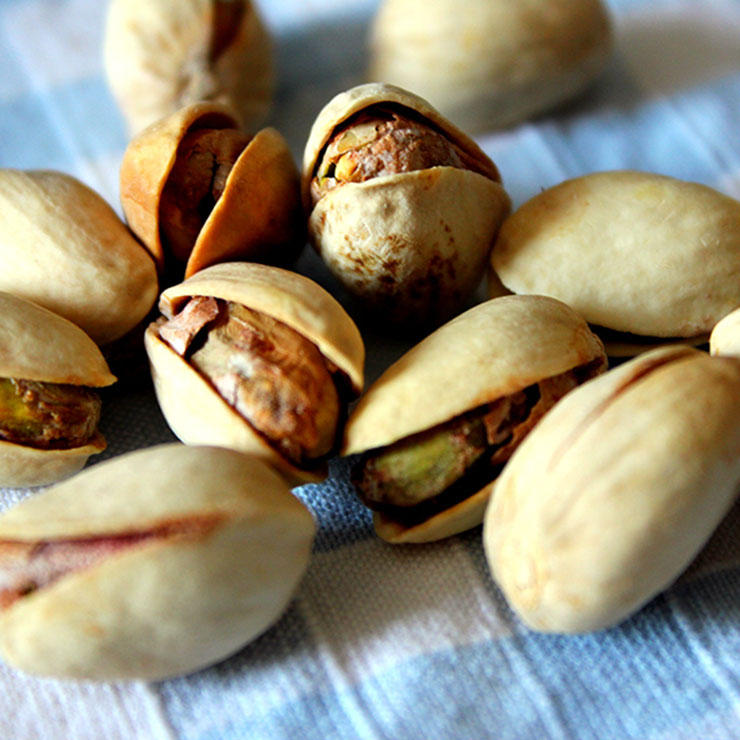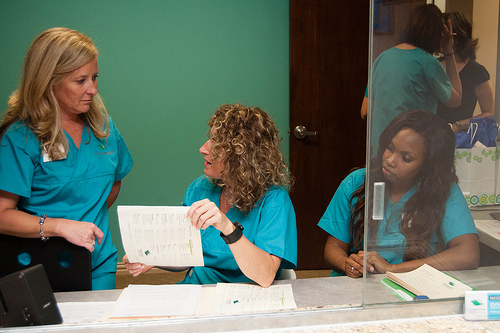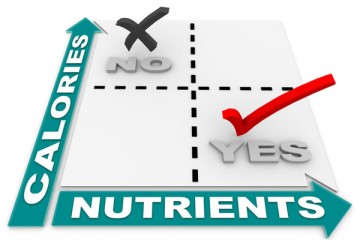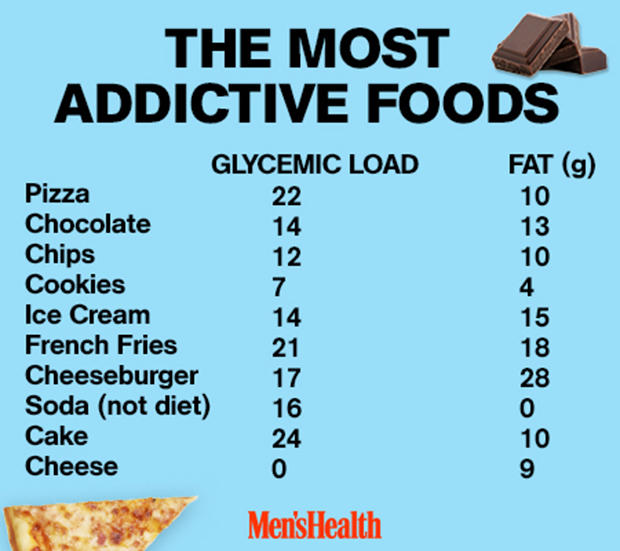wikiHow to Diet Properly
It can be very frustrating to feel like you are overweight. You might feel less confident and even a bit sluggish. One of the best ways to become healthier is to change your diet by eating healthy foods and controlling portion size. When you begin a diet, make sure that you are getting enough nutrients and not going overboard on limiting your food intake. Diet is always most effective when combined with other healthy lifestyle choices and a good attitude.
Steps
Method 1 Choosing Healthy Foods
-
1
Learn about calories. Most dieters report that they count calories, but an overwhelming majority also say that they don't really know how many calories they need. We are trained to think that fewer calories means more weight loss, but really, you need to be mindful of where you calories are coming from, not just how many you consume.[1]
- Men report eating an average of 2,600 calories per day, with women consuming about 1,800. You may need less than that if you are trying to lose weight, but you should always eat at least 1,200 calories a day. Any fewer and your body thinks it is in starvation mode. That means it will hold on tightly to fat stores.
- Ask a nutritionist or personal trainer to help you figure out how many calories you should eat per day for healthy weight loss. Take into account how active you are.
- Make your calories work for you. Fill up on foods that have a lot of fiber (whole grains) and protein (lean meats). These will help you fill full longer and give you more energy.
- Avoid "empty" calories that don't give your body much fuel. Alcohol and items like potato chips are good examples of calories that aren't serving much of a nutritional purpose.
-
2
Read labels. Paying attention to the nutrition labels on food packages can help you make sure that you are making healthy choices. One of the most important parts of the label is the serving size information. This tells you how many servings are in each package, and what the nutrition facts are for each serving.[2]
- You should also note the calorie count. As a general guideline, 40 calories per serving is considered a low amount, 100 calories is moderate, and 400 is high.
- Try to limit the following nutrients: trans fats and saturated fats. These are not only linked to obesity, but also to heart disease and high blood pressure.
- Look for foods that have significant amounts of fiber, Vitamin A, and Vitamin C.
-
3
Cook. Eating out or buying prepared foods is convenient, fast, and easy. But it also means that you can't control how your food is prepared or what ingredients are used. One of the most effective ways to lose weight is to cook your meals at home. You can choose healthy cooking methods (baking instead of frying) and fresh ingredients.[3]
- Plan your meals in advance. By making a weekly menu, you will be less likely to go off track and call for take-out midweek. You can make things easier on yourself by preparing healthy meals to keep in the freezer and take out as needed.
- Make cooking fun. Treat yourself to a new set of knives or a cute apron. These sorts of things can give you the motivation you need to spend more time in the kitchen.
-
4
Get the right nutrients. Eating a balanced diet means that you are getting enough nutrients from each of the food groups without eating too much from any one group. You want to aim for a combination of fruits and vegetables, healthy proteins, whole grains, and dairy. Avoid diets that are high in fats and added sugars.[4]
- Try to eat 4 servings of fruit and 5 servings of vegetables each day. A great way to add more veggies is to make a big salad that combines several types of greens and even some fruits, like apples.
- Eat 3 servings of dairy per day, but try to make it reduced fat dairy. For example, drink a cup of skim milk for breakfast or have a piece of low-fat string cheese for a snack.
- Choose healthy fats, such as those found in nuts, salmon, and avocados.
-
5
Snack. Good news! You actually need to snack while you're dieting. Eating frequently keeps your metabolism going and will help your body burn more calories throughout the day. Healthy snacks can also reduce hunger and keep you from overeating at meals.[5]
- The key is to make sure that you are choosing healthy snacks. Reach for fresh fruits and veggies, nuts, or low-fat dairy. Try some cucumber slices with hummus for a satisfying afternoon snack.
- Keep healthy snacks handy in your desk at work. If you have some roasted almonds nearby, you'll be less likely to head for the cookies someone left in the break room.
-
6
Add more flavor to your foods. If foods taste great, you're more likely to eat them. One way to add flavor to any healthy food is to add some salsa. Try topping your baked potato with salsa instead of butter and you'll save on calories and fat. Bonus: you've also added an extra serving of veggies to your meal.[6]
- Adding salsa to your chicken, fish, and even salads, can help liven up your meals and provide a little more zest. Try buying fresh salsa at the grocery store, or even making your own.
- You can add flavor to almost any dish by adding herbs and spices, most of which contain almost zero calories. Try buying fresh herbs such as parsley, rosemary, or thyme. They will make your chicken, pork, or salad taste fresh and original.
- Some ingredients offer an added bonus other than flavor. For example, garlic is known to have anti-inflammatory properties. Season your fish or soups with garlic for a flavorful meal that is also healthy.[7]
- Tumeric is another popular, flavorful staple that should be in your spice rack. Try adding it to healthy salad dressings for an extra pop of flavor.
-
7
Avoid fad diets. It can be very tempting to try the latest trend in dieting. The media is often full of stories about celebrities who tried a fad diet and had great success. However, it is important to remember that not only to fad diets often not work, they can also be harmful to your health.[8]
- Most fad diets require you to cut out a major food group, such as carbs. The most important part of a healthy diet is making sure that you are eating a well-rounded meal plan that includes all nutrients. Avoid diets that require you to cut out food groups.
- Some fad diets can make you sick. Many fad diets promote eating a very low amount of calories, which can be dangerous to your health. Instead, eat the recommended number of calories for your body type and make healthy choices.
Method 2 Making Good Lifestyle Choices
-
1
Get moving. Dieting properly is a great way to start living a healthier lifestyle. However, you'll see the best results if you also begin a healthy exercise regimen at the same time. Studies show that combining diet and more physical activity will have positive benefits for your overall health and for weight loss.[9]
- Aim to be active for at least 60 minutes per day. You can break this up into small sections to make it manageable. For example, try walking to work and taking the stairs instead of driving and taking the elevator.
- Go outside. People who exercise outside report that they enjoy it more. Explore your neighborhood, or go hiking in a nearby state park.
- Call a friend. When you make plans to exercise with a friend you will be more likely to stick to the plan. Ask a buddy to join you at yoga or go for a long walk with you after work.
-
2
Stay rested. If you're not getting enough sleep, you might be more susceptible to weight gain. When you're low on rest, your body produces more cortisol, which is the stress hormone. This can make you more likely to reach for comfort foods instead of making healthy choices.[10]
- Try to get 7-8 hours of sleep per night. People who do tend to have a healthier body weight than people who clock only 5-6 hours per night.
- Get on a schedule. If you try to go to bed at the same time each night and wake up at the same time each day, your sleep will be more restful and effective.
-
3
Avoid stress. There is a clear link between stress and weight gain. When you are stressed, your body releases more cortisol, which causes your body to retain more fat. This tends to happen especially in the abdominal region. To get the most out of your healthy diet, you need to work on reducing your stress levels.[11]
- A great way to reduce stress is to make sure that you are exercising regularly. This releases endorphins and generally improves your mood.
- Take deep breaths. Focusing on your breathing is a very effective method for reducing stress. Breathe deeply in and out, slowly inhaling and exhaling. This will slow your heart rate and help clear your mind.
-
4
Set healthy goals. Part of living a healthy lifestyle is knowing how to set realistic goals. Avoid making specific demands of yourself, such as "I will lose 15 pounds this month." Instead, set smaller, more achievable goals. Healthy weight loss is generally considered 1-2 pounds per week.[12]
- Give yourself manageable goals, such as "I will exercise six days this week." That progress is easy to track, and you can reward yourself for achieving these mini-goals.
Method 3 Having a Healthy Attitude
-
1
Stay positive. The power of positive thinking is not just a myth. In fact, positive thoughts are key to dieting properly. Thinking positive thoughts can increase your motivation and energy levels. Negative thoughts, on the other hand, can lead to behaviors such as emotional eating and skipping a workout. [13]
- Avoid negativity. Try to not get angry at yourself if you slip up and reach for pizza instead of a healthier option. Instead, tell yourself you must have needed a break and plan to get back on track tomorrow.
- Set manageable goals. For example, promise yourself you will begin your healthy diet by adding 2 more servings of vegetables to your meals each day. This goal is easy to assess and you can congratulate yourself when you start to see and feel results.
-
2
Have a good body image. Some days it can be hard to feel comfortable in your own skin. It doesn't help when you're surrounded by images in the media of exceedingly thin celebrities. However, a positive body image is very important to your overall health and wellness. It will increase your confidence and make you more likely to make healthy choices. [14]
- Focus on the good things. If you really like your arms, tell yourself that when you look in the mirror. Make it a habit to compliment yourself at least once a day.
- Tape a positive affirmation or quote to the mirror. Seeing encouragement each day will help you gain a more positive body image over time.
-
3
Be kind to yourself. Stop beating yourself up. Research shows that if you are kinder to yourself you will be more successful in your fitness goals. When you have a negative thought, try to acknowledge it and then let it go. There's really no point in berating yourself for skipping the gym. It's much more effective to forgive yourself and move on.[15]
- Give yourself rewards when you stick to your healthy diet. Allow yourself an extra episode of your favorite tv show or a relaxing bubble bath to help you unwind.
-
How Much Sleep Do You Really Need?
You stayed up late watching Game of Thrones and you know what will hap
-
12 Empowering Ways To Track Your Weight Loss Without Stepping On A Scale
Standing on the scale sucks. And not just because it can be the most f
-
Spring Clean Your Weight Loss Plan
With springtime comes change. Its not just about the flowers blooming
-
How to Lose Body Fat
With so much advice on how to lose weight out there, its hard to know
-
Easy Weight Loss Program Tips For Doing It Right
If you are looking for an easy weight loss program to follow, I c
-
Weight Loss Contest for the Summer
Tom Venuto sent me this article about a Weight Loss Contest for
- DON'T MISS
- Tips To Lose Weight Without Diets
- Sitting On A Chair Helps You With Weight Loss
- Does water help to lose weight?
- Pro Tips To Improve Your Football Game
- Consistency For Effective Weight Loss
- How to Be Zen About Not Losing Weight
- Genuine Hoodia Supplements Can Help You To Lose Weight Fast
- Can You Really Lose Weight Fasting
- Tricks And Tips For Your Best Wedding
- Can I Lose Pounds – You Bet You Can




